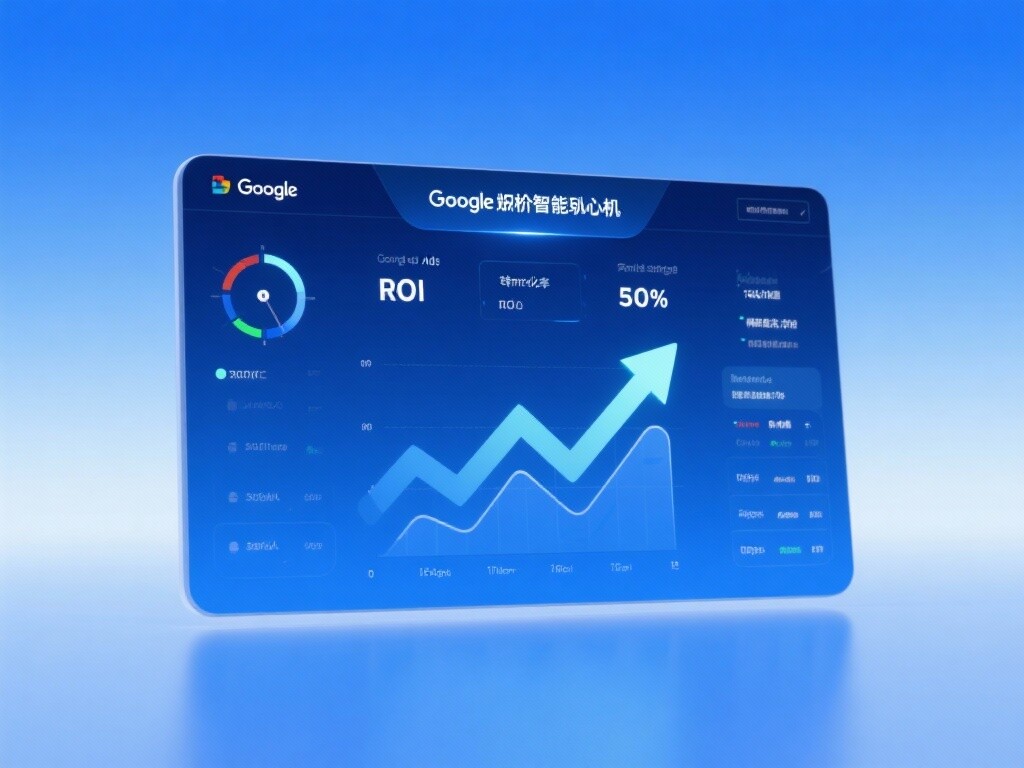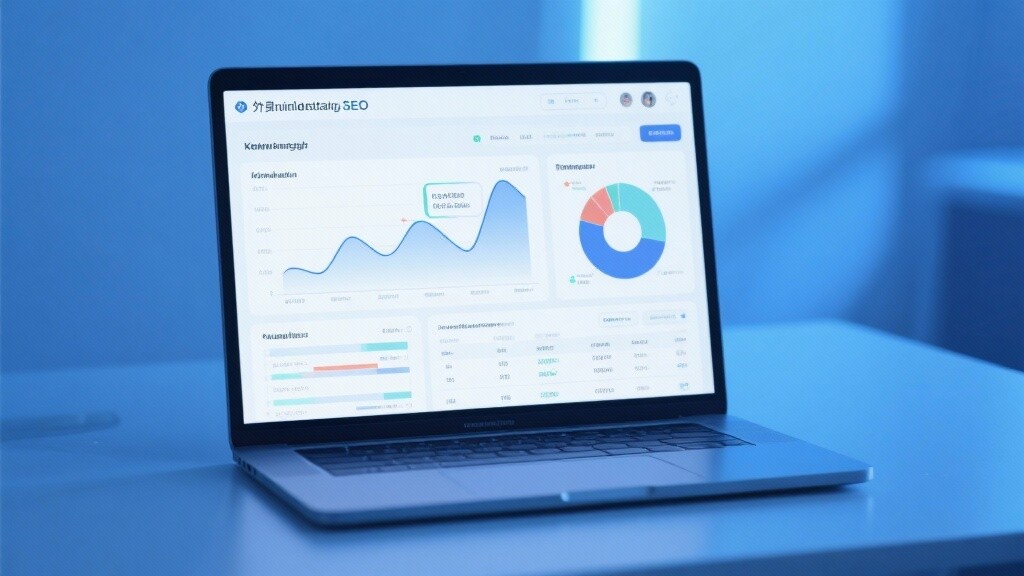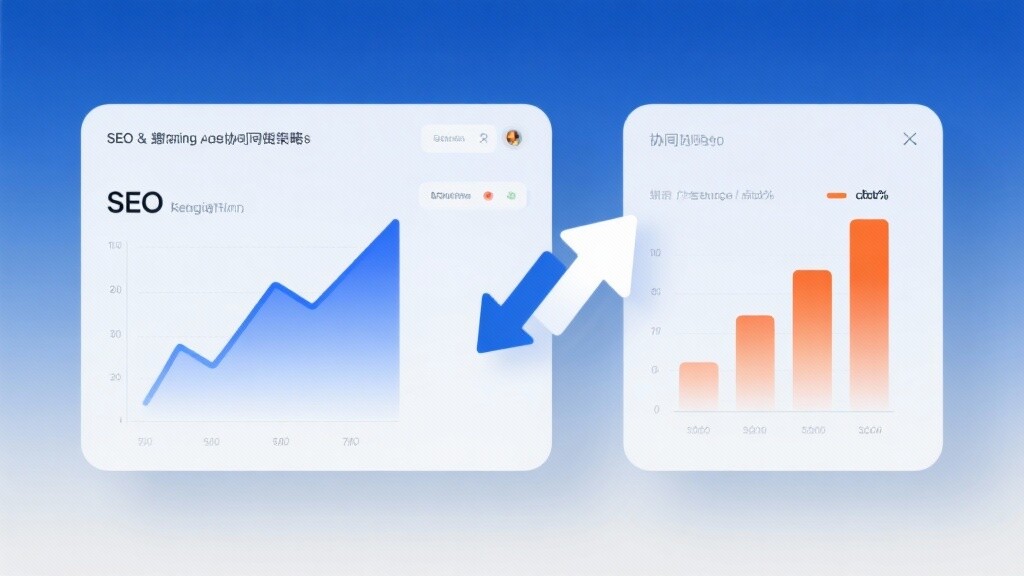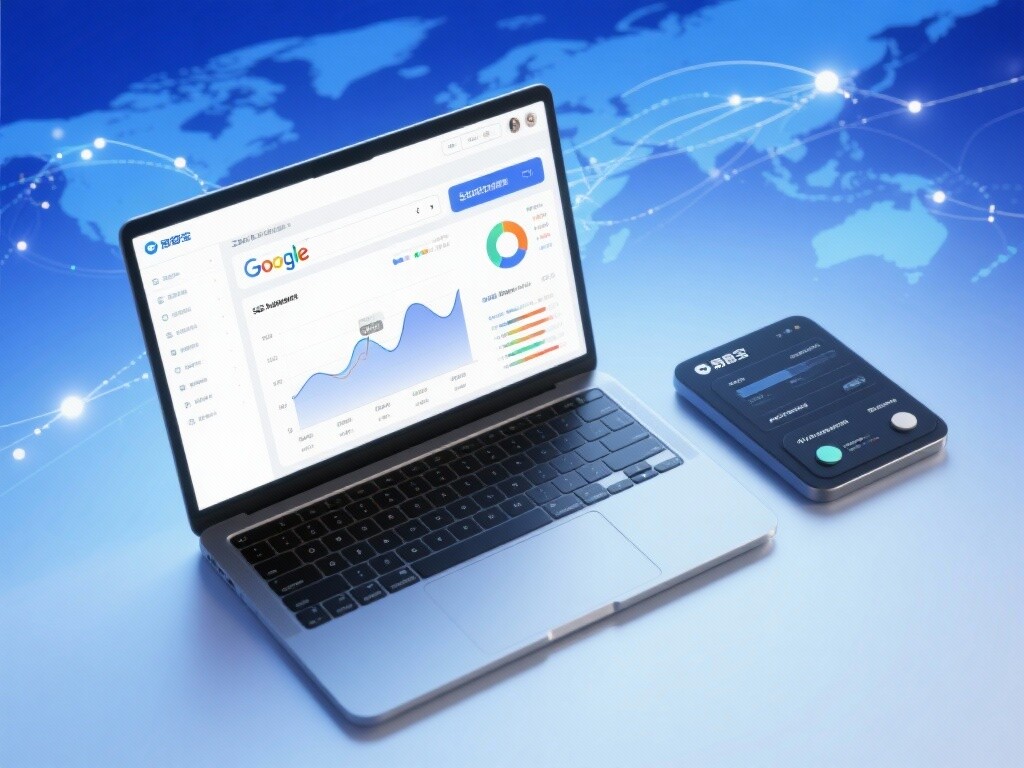Google Search Console definition: A real-time auction mechanism based on value and quality.
Google Bidding refers to a real-time auction mechanism on the Google Ads platform in which advertisers compete for ad placement opportunities , and the bidding strategies adopted to achieve specific marketing goals (such as clicks, conversions, and impressions) .
Google's bidding system is not simply about price competition , but about value competition . Its goal is to show users the most valuable and relevant ads while maximizing advertisers' return on investment.
The core elements of bidding:
Auction: Every time a user searches, browses a webpage, or watches a video, Google runs a real-time auction within milliseconds to determine which ads will be shown and in what order.
Bidding Strategy: The goals set by the advertiser guide the system in how to bid in each auction. This is key to achieving automation and maximizing efficiency .
Ad Rank: A composite score that determines the order in which ads are displayed and the actual cost to be paid. It depends on the bid and the quality of the ads .
The strategic significance of Google Ads: Achieving maximum marketing results with minimal cost.
The history of Google Ads: from manual control to AI automation
The history of Google's bidding mechanism is a microcosm of the shift in digital marketing from human experience to data science:
1. Early Stage: Manual Bidding and CPC Model (2000-2005)
Core model: Advertisers set a maximum cost-per-click (Max CPC) for manually selected keywords.
Characteristics: It relies entirely on the advertiser's subjective judgment and experience regarding the value of keywords. The bidding process has low transparency and low efficiency.
2. Quality Score and Value Drivers (2005-2015)
Milestone: The introduction of the Quality Score mechanism. Google began incorporating ad relevance, landing page experience, and expected click-through rate into its bidding decisions.
Impact: Bidding is no longer a case of the highest bidder wins; higher-quality ads can achieve higher rankings with lower bids .
3. The Birth of Smart Bidding and Machine Learning (2015-2020):
Technological revolution: Google introduced machine learning -based smart bidding strategies, such as target cost per conversion (tCPA) and target return on ad spend (tROAS) .
Principle shift: The system no longer bids based on historical keyword data, but instead predicts conversion rates and dynamically adjusts bids based on real-time auction signals (such as user device, location, time, and historical behavior).
4. The Era of Automation and Performance Max (2020 to Present):
Key trends: Automation is increasing further, and Google encourages the use of goal-driven strategies such as **Maximize Conversion Value**.
PMax launches: Performance Max campaigns leverage AI to take full control of bidding, audience, and placement optimization, expanding bidding strategies from single keywords to omnichannel and omni-audience .
The technical principles of Google Ads: Ad ranking and real-time signals
Understanding the underlying technology of Google Ads is key to implementing efficient bidding strategies and beating competitors.
1. Ad Rank Mechanism
Google Ads' core formula determines where an ad will be displayed (Ad Rank) and the actual cost paid.
Quality Score: A score of 1-10 that measures ad relevance, expected click-through rate, and landing page experience. A high score is key to reducing costs.
Actual CPC: The actual cost you pay in a bidding process is not your maximum bid, but rather a small amount higher than the bid required by the next competitor's ad ranking score . This means you will typically pay less than your maximum bid.
2. Real-Time Signals for Smart Bidding
The reason why intelligent bidding strategies are so efficient is that they can analyze billions of real-time signals at the time of each auction to accurately predict conversion potential:
The core of smart bidding is to no longer bid on keywords, but on the "conversion potential of users in a specific context".
Google Ads' core strategies: Analysis of five smart bidding types
Professional Google Ads strategies rely heavily on automation (smart bidding) and are optimized in a goal-oriented manner.
Strategic Recommendation: We recommend starting with **"maximizing conversions"**, accumulating sufficient data (30 conversions within 30 days), and then transitioning to "targeting tCPA or tROAS"** to achieve more refined cost and profit control.
Technical Features and Strategy Applications of Google Ads
A professional Google Ads strategy requires not only choosing the right bid type, but also applying and coordinating the strategy effectively.
1. Application of Value Rules
Features: Allows advertisers to define different types of conversion value weights at the account level.
Application: If conversions from specific regions, devices, or demographics are of higher value (e.g., inquiries from North America are 200% more valuable than inquiries from within the country), value rules can be used to inform the smart bidding system, making it more willing to bid on these high-value auctions.
Advantages: Ensures that the bidding system focuses its budget on the traffic that will generate the most actual revenue and profit .
2. The impact of attribution models on bidding.
Features: Attribution models determine how conversion credit is distributed among different clicks on the conversion path.
Applications: Smart bidding strategies (such as tCPA/tROAS) heavily rely on Data-Driven Attribution (DDA) . DDA models use machine learning to analyze actual conversion path data and assign credit to all clicks along the path.
Advantages: This allows the intelligent bidding system to more accurately identify and bid on key clicks that **"help conversions"**, rather than just focusing on final clicks, thereby improving the efficiency of the entire advertising campaign.
3. Eliminate the combination of negative words and audience signals.
Features: While intelligent bidding is powerful, it requires high-quality input .
Applications: Continuously optimize the negative keyword list to exclude irrelevant searches. Simultaneously, provide accurate audience signals (such as high-value customer lists) for PMax or Smart Shopping campaigns.
Advantages: By eliminating low-quality traffic and focusing on high-value users, it can significantly improve the learning speed and accuracy of intelligent bidding.
4. Coordination of budget and bidding strategies
Features: Bidding strategy and budget are dynamically coupled.
Application: When using tCPA or tROAS , the budget should be set to 10-15 times or higher of the target CPA to ensure that the system has enough flexibility and data to learn and optimize bidding, and to avoid insufficient bidding due to budget constraints.
EasyPro: Your Google Ads Smart Optimization Strategist
E-Creative understands that Google Ads bidding is a core driver of Google Ads' ROI. Our bidding optimization services are based on the experience of senior experts, the latest AI algorithm insights, and rigorous data science methodologies.
Bidding Model Diagnosis and Optimization: Perform an in-depth diagnosis of your current bidding model to determine whether to use tCPA, tROAS, or value rules , and ensure that it aligns with your actual business profit objectives.
Value-driven conversion tracking: Helps you deploy precise conversion value tracking (including dynamic value and offline conversions), ensuring that the AI in smart bidding learns about profit , not just quantity .
Real-time bidding performance monitoring: Continuously monitor the performance of bidding strategies across different devices, geographical locations, and time periods, and make timely adjustments to the strategies when data fluctuates to avoid wasting budget.
Intelligent and manual collaboration: For core brand keywords and highly competitive keywords, combine strategies such as target display share for brand protection; for long-tail and extended keywords, delegate authority to maximize conversion value and achieve comprehensive and precise control.
Choose EasyPro and transform your Google Ads campaign from a blind money-burning exercise into a data-transparent, predictable, and continuously ROI-optimized growth system.
FAQ
1. In Google Ads bidding, should I choose smart bidding or manual bidding?
In most cases, smart bidding is the recommended choice.
Smart bidding: Recommended for all accounts with conversion data (at least 30 conversions per month). It analyzes billions of signals in real-time, achieving precision and efficiency beyond human capability.
Manual bidding: Only recommended for accounts with extremely low traffic or insufficient conversion data, or for specific experimental testing. Once sufficient data is accumulated, immediately switch to smart bidding.
2. Why is my actual CPA still higher than the target value after using tCPA (Target Cost Per Acquisition)?
This is usually because your **"target CPA" is set too aggressively or the budget is insufficient**:
Target too low: If your target CPA is far below the account's historical average or market competition level, Google AI will struggle to find qualified traffic matching that target, leading to insufficient bids, reduced traffic, or acquiring low-quality conversions to meet the goal.
Budget constraints: If your budget is too low, it limits the system's ability to bid in high-value auctions, preventing AI from fully learning and optimizing. Solution: Gradually and slightly (no more than 10-20% each time) adjust the target CPA, and ensure sufficient budget.
3. What’s the difference between "Maximize Conversion Value" and "Target ROAS"?
Maximize Conversion Value: The goal is to achieve the highest total conversion value within the budget. You don’t need to set a specific ROAS target; the system will strive for maximum value, potentially accepting lower ROAS conversions.
Target ROAS (tROAS): The goal is to maximize conversion value while achieving a specified ROAS. This is a risk-control strategy—the system won’t sacrifice profitability for value and avoids auctions unlikely to meet your ROAS target. E-commerce advertisers typically prefer tROAS.
4. How does low Quality Score ultimately affect Google Ads bidding?
Low Quality Score is a direct cause of high costs.
High costs: If your Quality Score is low, your actual CPC will be higher, as you’ll need higher bids to compensate for quality shortcomings to compete for ad rankings.
Ranking limitations: Extremely low Quality Scores (1-3) may prevent your ads from participating in certain high-value auctions, even with high bids. Conclusion: Optimize ad copy, keyword relevance, and landing page experience—improving Quality Score is a more effective long-term strategy than raising bids.

Customer Reviews
Mr. Song, CMO of a SaaS tech company
"Our previous manual bidding strategy was costly and inefficient. The EasyAds team deployed a tROAS bidding strategy based on Data-Driven Attribution (DDA) and guided us in setting dynamic conversion values. The result: Our ad spend return on ad spend (ROAS) increased by 38% over four months and stabilized at a high level. Most importantly, the system now automatically identifies ‘assist clicks’ that contribute to final conversions, ensuring our budget flows to the most valuable traffic."
Ms. Wang, CEO of a cross-border e-commerce company
"We faced challenges with seasonal traffic peaks. EasyAds experts advised using **‘value rules’ to increase bids during Black Friday promotions, combined with Advantage+ Shopping Campaign’s automated bidding. During peak periods, the system successfully kept our CPA within target range while ensuring sufficient ad exposure and conversion volume. Their bidding strategy allowed us to **scientifically and confidently handle traffic surges** without overspending blindly."
 Advantages of Google Bidding AdsGoogle Bidding Ads' core strengths of accurately capturing high-intent users, being highly transparent and controllable in terms of results, having unrivaled traffic scale, and offering great placement flexibility make it one of the preferred channels for digital marketers pursuing efficient conversions and manageable budgets.
Advantages of Google Bidding AdsGoogle Bidding Ads' core strengths of accurately capturing high-intent users, being highly transparent and controllable in terms of results, having unrivaled traffic scale, and offering great placement flexibility make it one of the preferred channels for digital marketers pursuing efficient conversions and manageable budgets. Foreign trade SEO newbie must see: from 0 to 1 to create a high conversion of the independent site of the complete strategyThis article analyzes in detail the core methodology of SEO for foreign trade independent stations, including technical optimization, content strategy, localization adaptation and other key aspects, and provides practical application cases of EYB AI intelligent marketing platform to help industrial and trade enterprises to efficiently develop the international market.
Foreign trade SEO newbie must see: from 0 to 1 to create a high conversion of the independent site of the complete strategyThis article analyzes in detail the core methodology of SEO for foreign trade independent stations, including technical optimization, content strategy, localization adaptation and other key aspects, and provides practical application cases of EYB AI intelligent marketing platform to help industrial and trade enterprises to efficiently develop the international market. New ideas for precise customer acquisition: how SEO + bidding can work together?In-depth analysis of the synergistic value of SEO and bidding advertising, providing a complete guide containing technical solutions, data cases, and implementation paths, especially suitable for decision makers of foreign trade enterprises planning to go overseas.
New ideas for precise customer acquisition: how SEO + bidding can work together?In-depth analysis of the synergistic value of SEO and bidding advertising, providing a complete guide containing technical solutions, data cases, and implementation paths, especially suitable for decision makers of foreign trade enterprises planning to go overseas. Successful cases of industrial and trade enterprises going to sea: how do they multiply orders through SEO?Through the real case analysis of industrial and trade enterprises to go to sea SEO full chain method, covering the independent station construction, multi-language optimization, AI content production and other core links, combined with the YiYingBao tool to show the technical solutions.
Successful cases of industrial and trade enterprises going to sea: how do they multiply orders through SEO?Through the real case analysis of industrial and trade enterprises to go to sea SEO full chain method, covering the independent station construction, multi-language optimization, AI content production and other core links, combined with the YiYingBao tool to show the technical solutions.








